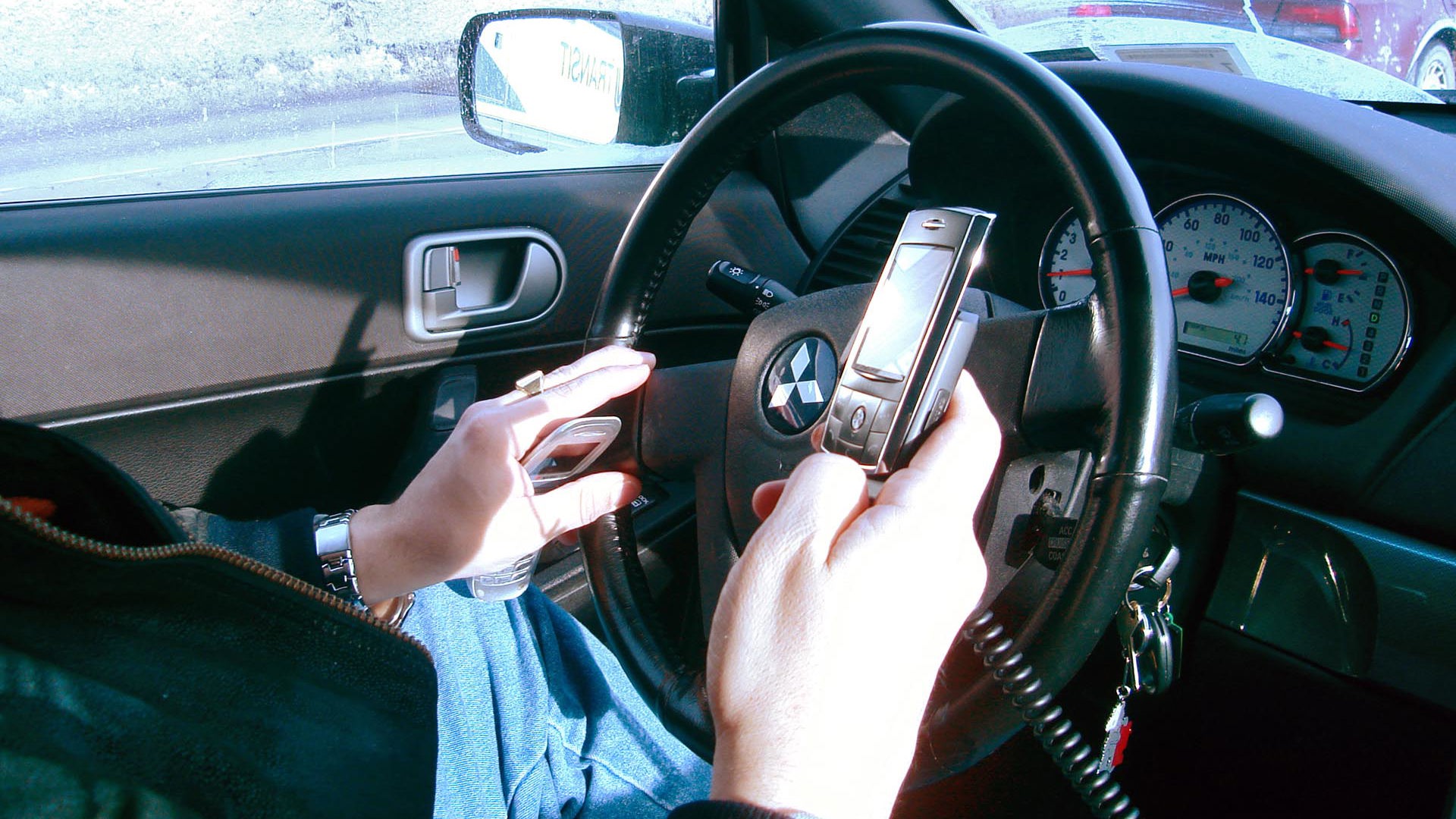Ontario recently passed legislation that boosted fines and added demerit point penalties for distracted driving. But what exactly does distracted driving entail? Ask someone on the street and their immediate answer might be "texting while driving". However, that is only part of the picture.
State Farm recently ran a national survey to investigate Canadians' attitudes toward driving. The overall consensus was that distracted driving was the single most dangerous behaviour on the road, followed by running through a red light or stop sign, and aggressive driving and speeding. In fact, 93% of respondents felt that other drivers were not paying attention in traffic. On the flip side, however, only 35% of respondents admitted to being distracted when driving. That works out to roughly one in three cars on the road with a driver behind the wheel not giving their full attention to the safe operation of their motor vehicle. But why this wide gulf between the two figures? Is the majority overestimating their ability to stay focused on the road? Or is the relative minority just that noticeable when they drive erratically?
Whatever the reason, the fact is that distracted driving presents a very real threat on our streets and highways. And the most common distraction? It's not what you might expect.
Eating and Drinking
Roughly 15% of drivers on the road today say that the biggest distraction for them is juggling take-out as they head from point A to B, and unlike the other factors listed here, that figure is consistent for all age groups.
Why is this a concern? Well, say you've stopped at the drive-through on your way to work; even if you manage to deliver your breakfast sandwich successfully into your mouth, it would only take a single misjudged braking event to douse the front of your shirt (or the crotch of your pants) with lawsuit-temperature coffee. And nothing hijacks your awareness quite like a wash of hot liquid soaking through your layers and pooling under your rump.
Operating the Centre Stack
Tuning the radio? Adjusting the A/C? As manufacturers adopt ever-larger touchscreens for their infotainment systems, drivers will find themselves needing to take their eyes off the road in order to look at said shiny LCD display. While voice command systems have greatly improved since their introduction a decade ago, they may not cover all functions of the vehicle, or cannot effectively recognize what you're saying, with address entry into the GPS navigation system being a particular pain point.
In fact, the infotainment system in a modern car has grown so complex, so attention-grabbing, that over 20% of drivers on the road today state it's their biggest distraction on the road, with close to 30% of respondents 18–34 making that claim, ahead of texting while driving (15%). Thankfully, the most common controls are now duplicated on the steering wheel itself.
Texting while Driving
Believe it or not, it's the middle-aged adults who lead this group, with 16% of drivers aged 35–44 claiming it as their top distraction, compared to 15% of those aged 18–34. Less than 10% of those above the age of 45 state the same, though that may correlate with cellphone usage in general.
Note that these numbers account only for self-reported top distractions, there may well be many drivers who check their messages while driving, but don't consider such behaviour to be particularly distracting. It's this kind of thinking that State Farm is trying to address, and which will soon be tested in Ontario under its new laws.
Interacting with Passengers
With the exception of the 18–34 group, drivers were universally more likely to be distracted by their fellow occupants than their phones. Be it an amusing anecdote or a soon-to-be-serious threat to turn the car around, the mere act of engaging with others in your vehicle takes your focus away from checking your mirrors, scanning ahead, watching your speed, or any number of essential driving tasks.
In fact, depending on the nature of the conversation, a driver may be more affected by talking to their passengers than by not using a handsfree device while talking on a cellphone. Or in the case of the 35–44 group, 21% of whom copped to this distraction, it's likely some driver-seat parenting was called for.
Focusing Outside the Car
For drivers over the age of 45, this was the number-one distraction, as noted by over 33% of drivers aged 45–54, over 45% of those aged 55–64, and over 50% of those aged 65 and above. In fact, it was the number-one distraction overall.
But wait, isn't the driver supposed to be looking outside? Yes, but not at the adorable puppies coming down the sidewalk, or the monstrosity going up where that charming bungalow used to be, or at the fender bender being attended to by at least three police officers.
Given this information, what can drivers do to minimize distractions in the car?
- set cellphones to silent instead of vibrate
- use a playlist instead of searching for each song individually
- program the GPS before setting off
- take breaks to eat and drink
- pull over if passengers require extra attention
While distractions are inevitable, remember you can always stop the vehicle if you need to address the cause of the distraction. It may sound glaringly obvious, but a surefire way to not drive distracted is to simply remove driving from the equation.
29%. That's the proportion of respondents who said they would stop driving distracted if fines were increased. We'll see how that plays out soon enough when Ontario starts enforcing its new legislation.
For the results of the State Farm survey, check out the video below.

